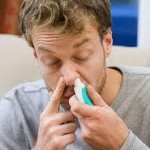New Year’s Eve Safety Tips
By · Comments New Year’s Eve is just a few days away. Thousands of people are making plans to celebrate the New Year at hotels, bars and restaurants. It’s important to take some cautionary steps to insure a safe celebration. The combination of high alcohol intake and relaxed inhibition can increase safety risks. Consider the following safety items while celebrating this New Year’s Eve.
New Year’s Eve is just a few days away. Thousands of people are making plans to celebrate the New Year at hotels, bars and restaurants. It’s important to take some cautionary steps to insure a safe celebration. The combination of high alcohol intake and relaxed inhibition can increase safety risks. Consider the following safety items while celebrating this New Year’s Eve.
Social Media
It’s fun sharing your latest experiences with family and friends. Realize though you are also telling many that you are not home and that your apartment or home is vacant. Most burglaries occur when people are not at home. Be careful what you decide to share and say on your Facebook, Twitter, Google+ or other social media accounts.
Hotel
If you plan on spending the night at a hotel, consider choosing a room above the 1st floor and lower than the 8th floor. Most hotel burglaries happen to rooms with easier access on the 1st floor. In case of a fire, most fire ladders can’t reach above the 7th floor. Remember to keep all doors and sliding doors closed and locked. Keep valuables locked in the hotel safe, especially when you are not in the room.
Drinking
Accept only drinks you see the bartender pour and never leave your drink unattended. Drugs such as Rohypnol the “date-rape” drug can be easily placed in your drink within seconds. If you must leave your drink, place it in the security of a close friend (buddy) or better yet, finish it before going to the restroom or dance floor. If you find your drink has been left unattended, even for a very short period of time, discard it and get another.
Get Cash Ahead of Time
Many robberies occur at public ATMs. Mostly at night, but it can happen at any time. When in need of an ATM, always go with a group of friends. Be suspicious of people that are just hanging around with no specific purpose. If it seems unsafe, choose another ATM. Make sure to cover the keypad, with your other hand, as you input your pin number. Take out only enough cash you need for that evenings celebration. You can always get more, but you can’t replace what is lost or stolen.
Uber or Taxi
Either form of transportation has its risks, but a few things you should consider when using Uber. As with all new and growing companies, Uber has had its share of issues, from passengers getting injured and questions if the owners car insurance cover the passengers inside, to alleged rapes and assaults. With any form of hired transportation that is used late at night, you may want to adhere to the following suggestions. 1) Call a trusted friend and give them the make and model of the car and license plate number before entering the vehicle. 2) Stay of the phone with your friend and update them to your location frequently. 3) Any changes or deviations from your route, inquiry with the driver why they are heading that direction. If you’re not satisfied with the answer, immediately update your friend to your present location and have them call 911. This is not an attempt as a derogatory or poor review piece concerning Uber, just safety directions that can be used with any form of paid transportation.
Following these few safety tips may make it a safer and more enjoyable New Year’s celebration. CPRescue wishes everyone a Safe and Happy New Year!!!
Nasal Spray Kills Cold Virus
By · CommentsNasal sprays can help reduce sinus congestion, but a recent study showed to have an anti-viral effect, especially against the rhinovirus, the virus responsible for the common cold. The effective compound in several over-the-counter nasal sprays is Oxymetazoline which may kill the virus that causes colds.
In this volunteered study, each person was given either a nasal spray that contained oxymetazoline or a saline solution. The participant that received the saline solutions showed no significant reduction in virus levels. While participants receiving the nasal sprays containing oxymetazoline showed a reduction in the rhino-virus levels.
Many of the popular brands such as Afrin, Dristan 12 Hour Nasal Spray, Duramist Plus and Vicks Sinex 12 Hour Nasal Spray, contain oxymetazoline.
The study cautioned that not only do these sprays reduce virus levels and provide temporary relief of nasal congestion, continual or long term use (5 or more consecutive days) could lead nasal tissue damage and chronic congestion. So use wisely.

Can I Fly With a Cold
By · CommentsIt is not recommended to travel, especially to fly, when dealing with a cold or flu. Travelling continues to add stress to your body and makes it difficult for your body to fight the illness. Flying with cold or flu can even be worse, since congestion can hurt or injure your eardrums as a result of pressure changes during takeoff and landing. Unfortunately for some of us this is not an option and travel, even when sick, must happen.
Consider the doing the following before and while you fly/travel:
Decongestant. Use a decongestant and carry a nasal spray with you to use just before takeoff and landing. Chewing gum and swallowing frequently can also help relieve pressure.
Blow Your Nose Often. It’s important to blow your nose regularly when you have a cold rather than sniffling mucus back into your head. But when you blow hard, pressure can cause an earache. The best way to blow your nose: Press a finger over one nostril while you blow gently to clear the other. Wash your hands after blowing your nose.
Sleep/Rest. Sleeping or resting when you first come down with a cold or the flu helps your body direct its energy toward the immune battle. This battle taxes the body. So give it a little help by getting as much rest or sleep when you travel.
Gargle Several Times a Day. Gargling can moisten sore throats and bring temporary relief. Try a teaspoon of salt dissolved in warm water, four times daily.
Drink Plenty of Liquids. Liquids helps prevent dehydration and helps the body flush out impurities. Hot liquids relieve nasal congestion and can soothe the uncomfortably inflamed membranes that line your nose and throat.
Remember, serious conditions can masquerade as the common cold and a mild infection can evolve into something more serious. If you have severe symptoms or are feeling sicker with each passing day, see a doctor.
Death By Sitting
By · Comments Sitting, if it was classified as a disease, would be the 3rd leading cause of death. Sedentary life styles could lead to diabetes, weight gain, depression, osteoporosis and some cancers. Sitting can also lead to “Deep Vein Thrombosis” (DVT) a blood clot that develops deep inside a larger vein – usually within the lower leg or thigh. Symptoms may include redness, swelling of the legs or pain and local tenderness. Deep vein thrombosis itself, has caused up to 100,000 deaths each year in America.
Sitting, if it was classified as a disease, would be the 3rd leading cause of death. Sedentary life styles could lead to diabetes, weight gain, depression, osteoporosis and some cancers. Sitting can also lead to “Deep Vein Thrombosis” (DVT) a blood clot that develops deep inside a larger vein – usually within the lower leg or thigh. Symptoms may include redness, swelling of the legs or pain and local tenderness. Deep vein thrombosis itself, has caused up to 100,000 deaths each year in America.
The immediate danger with deep vein thrombosis, is that part of the clot can break off and travel through the bloodstream, where it can lodge in the lungs causing a blockage in blood flow, resulting in organ damage, and in many cases death.
A blood clot that blocks the blood supply to the lungs is called a pulmonary embolism. Symptoms may include trouble breathing, low blood pressure, fainting, faster heart rate, chest pain, and coughing up blood. If you have any of these symptoms, call 911 or go to the emergency room immediately.
The following people have an increased chance of developing a DVT:
- People whose careers require long periods of sitting
- Long distance travelers (airplane, car or train)
- People who had recent surgery
- Anyone with extended bed rest
- The elderly
- Smokers
- Individuals who are overweight or obese
- People with cancer
Prevention
The best prevention is exercise or movement. If your job requires extensive periods of sitting or when you are traveling for more than four hours, avoid wearing constrictive or tight clothing. Drink plenty of water, get up and walk around at least every two to three hours. If you must to stay in your seat, find ways to keep the legs active. Try clenching and releasing your leg muscles or lifting and lowering your heels with your toes on the floor.
If you are a smoker consider quitting, or if overweight begin a physician overseen weight loss program.
Treatment
If you are in one of these high risk categories consult your physician about possibly using a compression stocking. Compression stockings apply pressure to keep the blood in the legs from pooling and clotting. They reduce swelling and help relieve discomfort in a leg where a clot has already formed. You can get compression stockings over the counter or by prescription. Also to reduce swelling and discomfort, keep the affected leg raised when possible.
Which is the Deadliest Day of the Year?
By · CommentsThough many days are in the running such as New Year’s Eve, New Year’s Day or Christmas Eve, the number one (1) deadliest day of the year, according to the American Heart Association is, Christmas Day or December 25th. This is the date with the highest number of heart attacks.
Believe it or not the second most deadliest day is December 26th, followed closely in third place by January 1st. December comes in as the most deadliest month of the year. Researchers have not been able to determine the specifics why December is the most deadly, but many hypothesize certain behaviors and outside influences can have an impact. Nonetheless, taking prudent actions during this holiday season can improve your risk. Consider the following suggestions:
Overeating and Drinking
Over consumption of higher fatty foods, increased levels of alcohol and salt to our diet, can put extra stress upon your digestive and heart systems. Enjoy these foods in moderation and try to balance your diet.
Weather
Cold weather is extremely hard on the heart. It increases blood pressure because of the constricting of the blood vessels due to the cold. Also blood clots occur more often in cooler temperatures. All this puts additional stress on your heart. Try and avoid too much physical exertion or strenuous exercise in cold environment.
Pressure Deadlines
The extra pressure of work deadlines as well as shopping adventures for gifts can increase the stress to the body. Again moderation and some type of balancing of these activities will help alleviate or reduce your stress levels.
Medications
When traveling to friends and relatives do not forget to pack your medications. This happens more times than not, and people will generally go without their medication for several days. Make sure to pack all medications as well as your physician’s phone number if you need him to call in an urgent RX for you when you are out of town.
Denial
Patients with symptoms of a heart attack in December are prone to just try and wish the symptoms away, or attribute them to some other cause. It’s the Holiday’s! Willfully ignoring the symptoms will not make them go away. Seek immediate medical attention. Delaying can make the situation much worse and even lead to death. Just because it is the holidays, do not think you are immune to a heart attack. If you have the symptoms call 9-1-1 immediately!
Which Seat is Safest on an Airplane?
By · CommentsWhere you sit can make a difference in surviving an air-crash. Most airlines and aeronautic experts say there isn’t a difference but, Popular Mechanics did a study of air crashes from 1971 and found some interesting information.
It is recognized that there are two times during an air flight when more accidents occur. In fact, over 75% of all accidents occur either during the take-off or the landing of the aircraft. But don’t let this fact deter you from flying. The statistics show that flying, by commercial aircraft, is 22 times safer than driving a motor vehicle on US roadways.
The type of crash can also have an influence, but in general the seats located towards the rear of the airplane had the best survival rates! Additional studies show that sitting within 5 rows of an exist also improved your chances of survival.
First class passengers may be more comfortable than the rest of the passengers, but the front of the plane has the lowest survival rates in air-crashes.
Here is the breakdown on survival rates:
First Class 49%
Ahead of Wing 56%
Over Wing 56%
Rear Cabin 69%
When making your next flight reservation you may want to consider these items. Dealing with motion sickness? You may want to consider a seat over the wings. These have been deemed the most stable with the least movement, but if you are looking for safety, then selecting a seat towards the rear of the plane as your best bet.
Best 7 Safety Tips for the Holidays
By · CommentsThe holidays are a time for families to celebrate and come together. It is also the time when hospitals report increases in the number of accidents and injuries. Now is the time to spend additional attention to your health and safety. Here are the best 7 safety tips for the holidays, to help keep you safe and healthy.
- Handling and Preparation of Food – Food poisoning can put a damper on the holidays. Make sure to wash your hands before handling any food items. Clean and/or disinfect all food preparation surfaces. Avoid cross-contamination especially with meats or fowl. Cook all foods to their proper temperatures and refrigerate left-over as soon as possible.
- Hand Washing – The best way to keep from getting sick and spreading germs is to wash your hands often. Plain soap and water is all you need. The use of a hand sanitizer will work when soap and water are not readily available. Avoid coughing or sneezing into your hands. The CDC now recommends that you cover your mouth or nose with your sleeve or into a disposable Kleenex, which is immediately thrown-away.
- Travel Safety – You have heard it a million times, don’t drink and drive. There is a reason why the Police and Highway Patrol increase their staffing during the holidays. Inclimate weather and holiday traffic, increase the opportunities for accidents. Allow extra driving time. You don’t want to resort to speeding or engage in reckless driving to make up time for leaving late or for unanticipated traffic delays. Always make sure everyone wears a seat-belt.
- Burns – Keep children out of the kitchen while preparing meals. Hot grease needs to be kept in a safe location. Pot handles should be pointed in and not left exposed away from the stove. This is an opportunity for kids to pull hot liquids down on them or adults accidentally bumping into the handles and spilling hot items on themselves or others. Cool all burns immediately with cool running water (no butter, lard, mayonnaise, egg, toothpaste or other home remedy). Small burns can be treated with an over-the-counter burn gel. Burns to the genitals, face or larger than 9% body area (about the size of your hand with fingers expanded) should be seen by a physician.
- Fires – Most residential fires happen in the winter months. Keep tree stands filled with water. Heated rooms can dry live trees out rapidly. Never leave candles, menorah’s, fireplaces, stoves or space heaters unattended. Check smoke detectors and replace batteries if it has been longer than 6 months. Have an emergency plan that is practiced with all family members. Children tend to hide when scared which makes it difficult to find them in smoky rooms. Teach them how to exit each room (have two solutions, such as the door or out a window) and have a rendezvous location outside of the home.
- Prevent Injuries – Use ladders and stools correctly instead of furniture when decorating. Hide or tape down with duct-tape all loose wires. Wear appropriate shoes when going outside. Rain, ice and snow can change the condition of walking surfaces. Use care and proper lifting techniques when lifting trees or large presents. Twisting or turning when lifting can cause falls and damage to your back. Nobody wants to spend their holidays in a hospital bed.
- Watch the Kids – This is an exciting time for the little ones. Their extra enthusiasm can put them into dangerous situation. Encourage their fun but in a safe manner. Give them toys appropriate for their age. Balloons, strings and ribbons are all potential suffocation or choking items for children under the age of 8. Have them dress properly before going outside. Always have them wear safety items such as helmets and knee or elbow pads when biking or using skates or skateboards.
Earthquake First Aid Kit Items
By · Comments The recent earthquake in the Napa area of California reminds us that a significant earthquake is always a present danger. One that we should be taken seriously and we should take proactive actions to prepare and gather supplies ahead of time.
The recent earthquake in the Napa area of California reminds us that a significant earthquake is always a present danger. One that we should be taken seriously and we should take proactive actions to prepare and gather supplies ahead of time.
If the Loma Prieta earthquake in 1989 taught us anything, is that medical and municipal service will not be readily available and we may need to fend for ourselves for several days.
Creating a first aid kit should be one of your first and on-going priorities. Food and water may be in short supply immediately after a major event. You should plan to have at least 3 days of supplies on-hand. Here are some suggestions on items you should be planning for:
Food
- Can foods work best during an emergency. Most don’t need to be cooked and can be eaten right out of the can. Make sure to store a can opener with you emergency food supplies.
- Eat frozen foods or items from your refrigerator first. Without power these foods will not last long.
Water
- Plan on at least 1 gallon of water per person per day. Your home offers several locations for drinkable water.
- Water drained from the water heater. (45 gallons).
- Water from the tank of the toilet (not the bowl).
- Melted ice cubes.
- Canned fruit and vegetable juices.
- Water from swimming pools and spas can be used for personal hygiene, cleaning, and related uses, but not for drinking.
Drugs/Medications
- Hydrogen peroxide to wash and disinfect wounds
- Antibiotic ointment
- Aspirin and non-aspirin tablets
- Prescriptions and any long-term medications (keep these current)
- Diarrhea medicine
- Eye drops
Dressings
- Bandage strips Cotton-tipped swabs
- Ace bandages Adhesive tape rolls
- Dressings & Roller gauze Sanitary napkins
Other First Aid Supplies
- Scissors
- Tweezers
- Bar soap
- Tissues
- Sunscreen
- Small plastic bags
- Iced or cold packs
For additional information, please feel free to download our free “Earthquake Safety Ebook.” http:///www.cprescue.com/earthquake-safety-tips/
Get Ready for the Cold and Flu Season
By · Comments Last year’s Cold/Flu Season reported 105 childhood deaths. Most colds and flu’s are due to a virus and the use of antibiotic will not work. Antibiotics are used to treat bacterial infections. Many secondary viral infections are bacterial and need antibiotics. These secondary viral infections include: ear infections, tonsillitis, pneumonia, bronchitis, strep and whooping cough.
Last year’s Cold/Flu Season reported 105 childhood deaths. Most colds and flu’s are due to a virus and the use of antibiotic will not work. Antibiotics are used to treat bacterial infections. Many secondary viral infections are bacterial and need antibiotics. These secondary viral infections include: ear infections, tonsillitis, pneumonia, bronchitis, strep and whooping cough.
With the cold and flu season almost upon us, we should begin taking precautions. To understand the difference and reduce the possibility of acquiring either, read the following 10 suggestion.
- Cold germs can survive on bathroom sinks, kitchen counters and doorknobs for up to 3 hours. Sanitize these areas regularly.
- Colds are most contagious before symptoms begin to appear.
- There are over 200 viruses that can cause a cold.
- Stress is the number one cause to increased susceptibility to a cold or flu infection.
- Chicken soup does help fight colds. It breaks up nasal congestion and the lean protein (chicken) helps boost your strength to fight off the illness.
- Drink plenty of fluids to keep hydrated and to flush out your system.
- Though you can run a mild fever with a cold in most cases a fever, especially a high fever, will indicate its flu not a cold.
- Some flu’s are bacterial and must be treated with antibiotics. If left untreated, it could lead to pneumonia, a life threatening respiratory illness.
- Get a flu shot. Flu shots do not carry an active flu virus in them. You can’t get the flu from taking a flu shot.
- Protect yourself from a cold or flu by washing your hands regularly, several times a day, with soap and water. Hand sanitizers can also help when soap and water are not available.
See a physician if you or your family member begins to feel ill. They can do test to determine if the cold / flu is viral or bacterial.
Earthquake Preparedness with Baby
By · Comments CPRescue has been asked to speak for the Blossom Birth Organization at the Whole Foods Market in Palo Alto. We will be conducting a half hour session about “Earthquake Preparedness with Baby.” Please see Blossom Birth’s announcement below:
CPRescue has been asked to speak for the Blossom Birth Organization at the Whole Foods Market in Palo Alto. We will be conducting a half hour session about “Earthquake Preparedness with Baby.” Please see Blossom Birth’s announcement below:
Blossom is honored to be the recepient of Whole Foods Market Palo Alto’s Nickels for NonProfits, this quarter! Everytime you bring your own bags to shop at the Palo Alto store, please be sure to say “donate” at the checkout counter, thank you! Also join us on Friday, Sept 12 from 10:00am until noon to learn helpful tips for your newborn! Speakers include:
- Mike Willson, CPRescue on Earthquake Preparedness with Baby
- When: Friday, September 12th, 2014
- Time: 10:30am
- Location: Whole Foods Market, 774 Emerson St, Palo Alto







